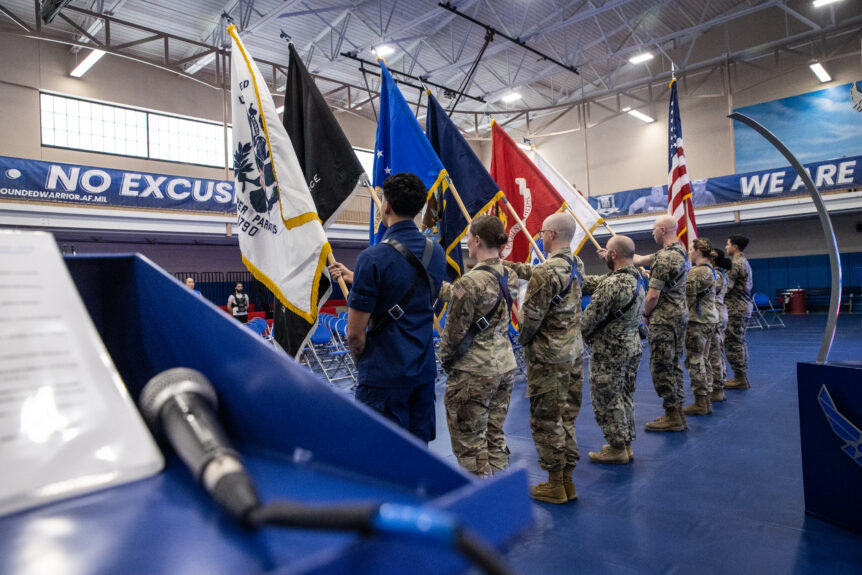The issue is that the service drill and ceremonies manuals do not specifically state that a color guard must be covered (wear their headgear: hats, helmets, or berets) all the time when presenting the colors. In this article, I go over the standards of being covered and when we can remove the cover.
You’re Covered
- When we are in uniform, when we enter a building, we remove our cover before, during, or just after going through the door.
- The same thing can be said for a vehicle.
- When leaving a building, we replace our cover before, during, or just after going through the door.
- Again, the same for a vehicle.
- While walking outside and going under an awning or overhead structure that does not have walls, no matter how big, it does not qualify for removing your cover just because you walk under it. If the awning is at a building entrance, and you are going inside, removal of your cover is required as stated above.
- “No Hat – No Salute” in the USAF, there are areas designated as areas where salutes and covers are not required. Most often this is an area between buildings where people must walk back and forth, and it would be unnecessary to constantly take your cover with you just to do a few minutes’ worth of business.
- We do not remove our cover when walking from the parking lot into this area. There is no magical line where a cover is removed, you walk from your vehicle to the building entrance and remove your cover there as usual. The area is designated “not hat – no salute” for the individuals who are moving from one building to another.
- Removing your cover while sitting down while eating outside is considered polite but there is no specific guidance on this.
- “Under Arms” has always been a statement that conjures up a member of the military police (or other armed individual) walking into the chow hall or on-base convenience store who doesn’t remove his cover because he needs to have his hands free to draw his weapon just in case something happens. Sounds good but isn’t a written standard (it can be local policy).
For more on uniforms, click here.
The Covered Color Guard
When we look at TC 3-21.5 and AFPAM 34-1203 we see they do not have written information on wearing covers while on colors. How do we find this information then? We look at the photos, we don’t solely rely on the text.
The only reference to not wearing covers is in MCO 5060.20 that states covers are not worn when presenting the colors inside a chapel.
Marching from and to outdoors would be an easy reasoning for wearing covers at all times since both situations require the team to wear their headgear from the start or to the end of the process. Inside all the time would be when the question would arise and that’s where the photos in the three service drill and ceremonies manuals come in.
All the color guard photos in all three manuals show team members in a complete uniform to include covers relevant to the uniform worn. Nowhere in the color guard descriptions does it state that covers are not necessary. That means covers are required all the time when on a color guard.


Comments 2
DAFI 36-2903 Para, 1.2.11. Authorized headgear will be worn while outdoors unless in an area designated as a “no hat” area by the Installation Commander. Headgear will also be worn indoors by armed Security Forces personnel or others bearing arms while performing duties.
USAF HGMAN 4.7.2. Hats/caps will not be worn indoors if the color team is not under arms, i.e. inside a church or place of worship.
Author
Great IRRELEVANT quote!